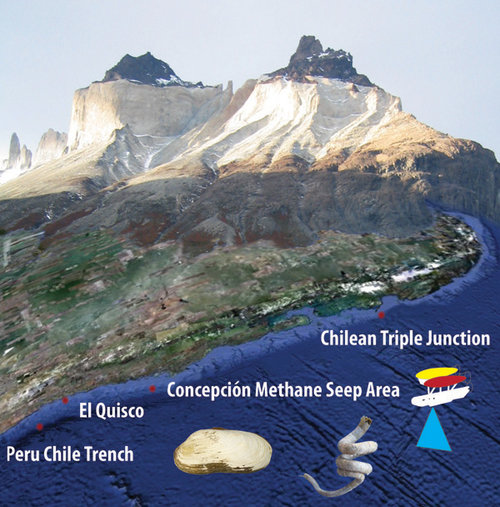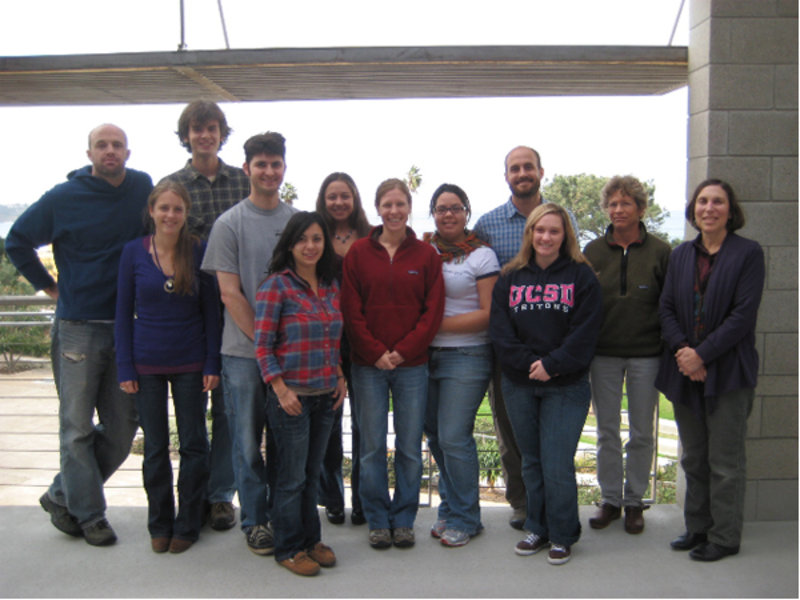
February 24 – March 17, 2010
INSPIRE: INternational Southeast Pacific Investigation of Reducing Environments
Jolted by the planet’s biggest earthquakes, sequestering massive reservoirs of methane, while slowly swallowing a mid-ocean ridge, the Chilean margin offers an inspiring natural laboratory for investigating the complex interactions among the solid earth, the deep ocean, and the biosphere. At the Chilean triple junction, where the South Chile rise (a ridge crest) is being forced under the methane-rich South American continent, 10 students — from Scripps Institution of Oceanography (SIO) and University of California – Santa Barbara— and an international team of scientists will explore for tectonically controlled hydrothermal vents, for seep sites of massive methane release, and for novel “hybrid” systems that may yield hot seeps or cool vents.

The incredible geology of Chile, such as found in Torres Del Paine, does not stop at the ocean’s edge. Exploring four sites along the Chilean coast, we will study how the exceptional geologic structures fuel a unique suite of species. Image courtesy of INSPIRE: Chile Margin 2010. Download image (jpg, 380 KB).
With the shared vision of several Census of Marine Life programs, the INSPIRE: Chile Margin 2010 expedition will probe for strange new biological life forms, communities, and ecosystems dependent on as-yet-unknown conditions. As the only location on Earth where all known forms of chemosynthetic ecosystems (hydrothermal vents, cold seeps, oxygen minimum zones, and whale, kelp and wood-falls) can coexist and be studied together, the Chilean margin is a prime target for remarkable discoveries.
Over roughly three weeks, members of the INSPIRE team will use an autonomous underwater vehicle (outfitted with cameras and chemical sensors) called ABE — in combination with instrumentation to measure conductivity, temperature, depth (CTD), a video-guided sediment corer, and a bottom trawl — to locate and characterize heretofore unknown and some barely known ecosystems. Perhaps these will provide a missing link between hot and cold deep-sea communities.

A diverse team of students from Scripps Institution of Oceanography (University of Californian – San Diego) and the University of California – Santa Barbara will be tackling broad-ranging questions about the geology, microbial processing, unicellular life, multi-cellular animals, and their food and dispersal abilities at depths far from the sunlit surface. Image courtesy of INSPIRE: Chile Margin 2010. Download image (jpg, 93 KB).
A diverse team of students from SIO (University of California – San Diego) and the University of California – Santa Barbara will be tackling broad-ranging questions about the geology, microbial processing, unicellular life, and multi-cellular animals (and their food and dispersal abilities) at depths far from the sunlit surface. They will be working with an international team of scientists and students from Chile and from other U.S. institutions (Woods Hole Oceanographic Institution and the University of Washington) to blend expertise across geological, chemical, and biological disciplines, and to forge international bonds of collaboration.
The INSPIRE: Chile Margin 2010 expedition has been made possible by special support and funding from the following institutions: